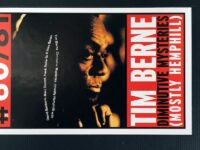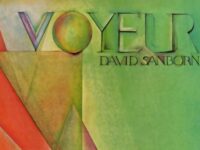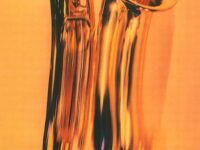“Jazz is the sound of surprise”
–jazz critic Whitney Balliett, 1926-2007
Sometimes you think you know a musician and his tendencies, or that he’s always played the kind of music you’ve known him to play. Over the course of pursuing my curiosity about certain artists, I’ve stumbled upon some rather peculiar recordings that went totally against my preconceptions of the artist involved.
For that reason alone, such records are a real trip to listen to—even if they’re not particularly good (and not all the records I am listing below are those I’d recommend).
Nonetheless, inquisitive minds want to know about the hidden, sometimes dark, past of a well-known or favorite celebrity. For music lovers, this means musicians’ left field entries in their discographies can be the subject of intrigue and sometimes, scorn. So what are some of the more notable hidden surprises coming from jazz musicians? Here are five such releases I will haul out of the closet, in chronological order of original release:
Bob James Explosions (1965)
Mr. James of Fourplay fame has long been the Jazz-Pop King since his 1978 hit “Angela,” written as the theme for the long running tv sitcom Taxi. But he got his start at the beginning of the sixties with 1962’s Bold Conceptions, a straight ahead session of acoustic trio jazz, which ironically was produced by another crossover giant of a later time, Quincy Jones. (Sure, James churned a couple of respectable, bop-oriented releases in recent years, but by then his notoriety was cast in stone and a nod or two to the jazz tradition wasn’t going to change that.) Those facts alone would merit inclusion of James’ 1962 debut on this list were it not for his extremely bold follow-up three years later.
Explosions was described by Allmusic.com’s Gene Tyranny as “probably the first recording of improvised jazz combined with electronic music.” That may or may not be true, but it’s interesting to note that it’s the same year a much more dauntless Roland Kirk also first fiddled around with such a discordant mix (Rip, Rig and Panic). Young Bobby didn’t stop there, though, he made random sounds on the inside and outside of his piano, too, like as if some six year old was goofing around on it. I don’t think even Cecil Taylor ever got that wiggy.
Maybe the extreme blandness of most of his later work was all part of some grand ying and yang equilibrium scheme. Whatever it was, Explosions is one record only the extremely curious would ever want to listen to.
Gato Barbieri In Search of the Mystery (1967)
When you think about it, Gato’s first record is more like the Gato you would expect if you knew nothing more about him than the volatile, husky skronk of his tenor and his apprenticeship under such a major avant garde figure as trumpeter Don Cherry.
Released under ESP-Disk, the same label who introduced much of the world to Albert Ayler, In Search of the Mystery certainly sounded like it belonged in that catalog. The Argentinian wails throughout (come to think of it, he wailed a lot even after he stopped playing whack jazz), but there’s no hint of the Latin in his music here that was to come later. For his debut, he leads an unusual quartet consisting of bass, cello and drums.
As you might anticipate at this point, the music is indeed tumultuous, but unlike James’ Explosions, it at least sounds somewhat purposeful. Consisting of a handful of twenty minute long tracks, this record would wear out its welcome quickly with most of the Caliente fans, but it’s pretty darned respectable free jazz.
Barbieri’s best work was still a few years ahead of him; his South American-flavored fusion of the early seventies is where he put his unique stamp on jazz. But you have to start somewhere, and Gato chose to start in such a challenging setting that everything after that was going to be a piece of cake for him by comparison.
Keith Jarrett Restoration Ruin (1968)
Longtime followers of Jarrett remember that he was more adventurous earlier in his career, freely shifting configurations and types of jazz from album to album; he even used to play other instruments beyond piano on his records, like soprano sax and organ. But one of Jarrett’s first stabs at a solo career during his stint as Charles Lloyd’s pianist was decidedly diametrically opposed to everything else he’s done musically.
Restoration Ruin was not even remotely close to jazz, it was folk-pop. And Jarrett wrote all the songs, played most of the instruments including acoustic guitar and sang—not the familiar wordless vocalizing he’s more famous for, but real, actual lyrics. There was a psychedelic baroque feel to much of the album, like as if he was trying to be the next Tim Buckley. But his off key, nasally vocals fell woefully short of Buckley’s magnificent croon. And the lyrics were sometimes downright embarrassing (“I see me as the fire, I see you as the rain”, etc).
If you listen closely enough you can sometimes tell that there’s a better than average musician playing behind those godawful vocals; his soprano sax on “Have A Real Time,” for instance. A few of the songs even had potential, melodically speaking. But hardly anyone will notice these attributes because listening closely to Restoration is a painful experience. Jarrett himself has reportedly admitted that Restoration was a folly.
When I listen to gorgeous, latter-day efforts like Whisper Not or The Melody at Night, With You I sometimes chuckle to think that this was the same guy who decades earlier made a failed bid as a third-rate Dylan. At the same time, I also praise Jesus that Jarrett ultimately made the correct musical career choice.
Note: About the only way you could obtain Restoration Ruin nowadays, if you were so inclined, is to purchase it as part of a twofer packaged with The Art Ensemble of Chicago’s 1972 live recording Bap-Tizum. Now that’s just messed up.
Joe Sample (with Shelly Manne and Ray Brown) The Three (1975)
This record is perhaps the least surprising one on this list; after all, Sample had toiled away playing acoustic jazz for ten years as a member of the Jazz Crusaders before they became electric and removed the “Jazz” part of their moniker at the turn of the seventies.
But this is still a bit of an anomoly for Joe; the Jazz Crusaders period was years behind him by this time and while that soulful, funky take on Art Blakey’s Jazz Messengers was very enjoyable, it wasn’t at the serious level that guys like Shelly Manne and Ray Brown were normally associated with.
But when Sample got together to record The Three with these two cats he went more than halfway to their side, even embracing the traditional, hard bop style to where it sounded like that’s what he’s been playing all along. Recorded the same year that Chain Reaction came out, it revealed a lot of breadth in Sample’s playing which has made him such an in-demand session player from the early seventies on.
Sample only hints at his signature gospel-influenced romp on his lone original “Funky Blues”, but like much of his Crusaders material, it’s a lot of fun. Manne and Brown were giants and Sample was hanging in there with them without breaking a sweat (which is what sets this apart from Sample’s 1969 straight ahead solo effort, the largely forgotten Fancy Dance).
The only other acoustic-based record led or co-led by Sample is Old Places, Old Faces, and it also happens to be one of his best as well. You see, Joe, you don’t need LA session players, slick production and guest vocalists to make a great record. Just haul Charlie Haden, Paul Motion and a Steinway into a studio and roll the tape. The Three, Part 2 is long overdue.
David Sanborn (Tim Berne) Diminutive Mysteries (1992)
Sanborn is often lumped into the “smooth” jazz category like Bob James, but in reality Sanborn’s highly recognizable alto sax voice has found a comfortable home in just about every setting imaginable. To call him a smooth jazzer or even a jazzer, period, is putting an artificial limit to the wide range of music he is capable of handling. Furthermore, he never seems to be making a symbolic nod to any genre, he embraces each one completely and genuinely. What I’d give just to check out this guy’s record collection.
Nevertheless, you still wouldn’t expect to hear Sanborn in a whack jazz setting. Oh, that’s right, he did cover Ornette Coleman’s “Ramblin'” on 1991’s Upfront so you know he’s been listening to the stuff, but even that song didn’t sound so avant garde in his hands.
In case you’re wondering, Sanborn never did lead a record of modern creative music, but his appearance on a Tim Berne record is by itself enough to justify inclusion on this list. And praise, as well.
The reason why Sanborn teamed up with major avant garde figure such as Berne on Diminutive Mysteries, however, is rather straightforward; Berne wanted to do a tribute album for alto great Julius Hemphill. Sanborn shared Berne’s admiration for the World Saxophone Quartet co-founder, whose early solo work like Dogon A.D. left a lasting impression on both guys.
Hemphill also being noted as a distinguished composer makes it no surprise that the record itself is comprised of mostly his dense, sometimes dark creations. Even though Sanborn mostly forgoes his alto for a higher pitched sopranino and he’s paired up with another alto sax heavyweight in Berne, there’s little trouble picking up where he’s providing support. Any casual listener of Sanborn will know that it’s him contributing the opening statement on “The Unknown,” for example.
If David Sanborn hadn’t opted to appear on Diminutive Mysteries, it would still rank among Berne’s finer moments. But the addition of a well-known sax player paying homage to little-known sax player who was no less important spoke volumes to the unaware about a man who can influence talents as divers
e as Sanborn and Berne.
Our Obscuro series examines an unnoticed, rare record that has merit as a curiosity item … and occasionally, sure, as good music.
- Matthew Shipp – ‘The Cosmic Piano’ (2025) - June 17, 2025
- Ivo Perelman & Matthew Shipp String Trio – ‘Armageddon Flower’ (2025) - June 16, 2025
- Claudio Scolari Project – ‘Bloom’ (2025) - June 12, 2025





nothing messed up about having to buy Restoration Ruin with Baptizum, one of the Art Ensemble of Chicago’s first broadly available (live) recordings, which completely demonstrates the band’s range as it was onstage at the Ann Arbor Blues and Jazz Fest. It’s a lucky bonus for Jarrett fans, which is more than AEC fans might feeel about highly inconclusive Restoration Ruin. — Howard Mandel
That Keith Jarrett record is a surprise, but it is not a good listen. It's awful.
Thanks for the Tim Berne tip.
Sanborn’s Another Hand experimented with guitarists such as Marc Ribot and Bill Frisell, interesting, if a little austere. One track is unforgettable: Hobbies has a deliciously weird theme, a great groove and one of his best burning solos.
Pingback: Bob James - 'Once Upon A Time: The Lost 1965 New York Studio Sessions' (2020) | Something Else!
Pingback: Something Else! reviews ONCE UPON A TIME: THE LOST 1965 NEW YORK STUDIO SESSIONS | BOB JAMES